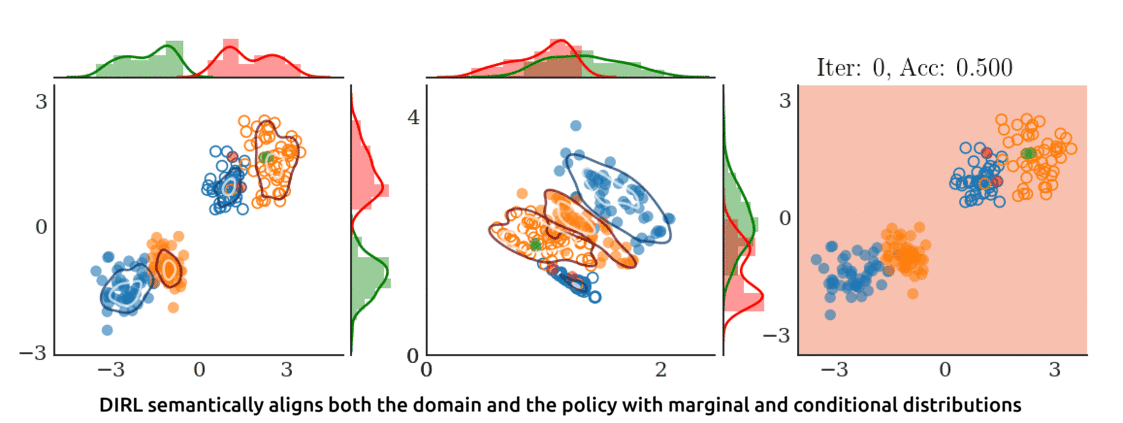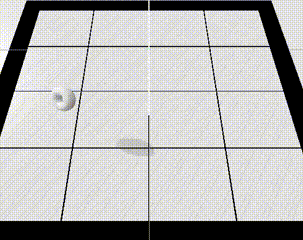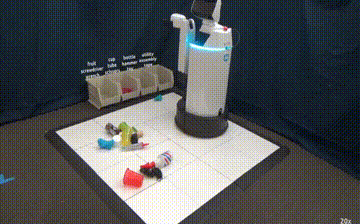Domain-Invariant Representation Learning (DIRL) is a novel algorithm that semantically aligns both the marginal and the conditional distributions across source and target enviroments. For more details, please visit: https://www.sites.google.com/view/dirl
 [Source Only] [Marginal Alignment Cross-Label Mismatch] [Marginal Alignment Label Shift] [DIRL]
[Source Only] [Marginal Alignment Cross-Label Mismatch] [Marginal Alignment Label Shift] [DIRL]
Follow the instructions to get started after cloning the repository (tested with python3):
virtualenv --python=/usr/bin/python3 env_dirl
source env_dirl/bin/activate
pip install -r requirements.txt
python setup.py develop
Below we provide a couple of examples to illustrate the efficiency of the DIRL algorithm in learning invariant feature representations with unseen out of training distribution target environments. Customize your results by adjusting the settings and hyperparameters in the respective config files in the configs folder.
CUDA_VISIBLE_DEVICES=0 python src/train_synthetic_2d.py -mode dirl -num_target_labels 4
Results are saved in the results folder with respective .yml config, results/figs and results/animations folder.
Vary the number of target examples num_target_examples and -mode among [source_only, dann, triplet, dirl] to analyse the performance of the algorithm.
First, download the digits datasets (required only once) in the resources folder by executing the script: python src/download_digits_datasets.py
CUDA_VISIBLE_DEVICES=1 python src/train_digits.py -mode dirl -source mnist -target mnistm -num_target_labels 10 -save_results True
Results are saved in results folder with the respective .yml config.
Vary the -source and -target options among [mnist, mnistm, svhn, usps].
-mode and -num_target_labels can be changed similarly as above.
@inproceedings{Tanwani_DIRL_CORL_20,
title={Domain Invariant Representation Learning for Sim-to-Real Transfer},
author={Ajay Kumar Tanwani},
booktitle={Proceedings of the 4th Conference on Robot Learning},
year={2020}
}

